English version
Hello community of travellers. Walking through the cathedral square in Havana, I had the opportunity to visit the Museum of Colonial Art, where we can learn about the colonial life of Havana from the inside. It exhibits objects that belonged to the Bayona family and other prominent families of the time. This building was built in 1720 by order of Lieutenant Colonel Don Luis Chacón, who was Captain General and Governor of Cuba, and from 1726 he began to live in this mansion. Later it was the residence of the Counts of Bayona, a noble family who lived in the building until the middle of the 19th century. In 1969, it became a museum. The building has two floors and its simple façade with few decorations is reminiscent of the old Castilian mansions of that period, however, it has characteristic elements of colonial architecture that make this building unique.
The museum has a varied collection of everyday objects, ceramics, crockery, furniture, handicrafts, etc. They come from some of the most outstanding old families of the colony.
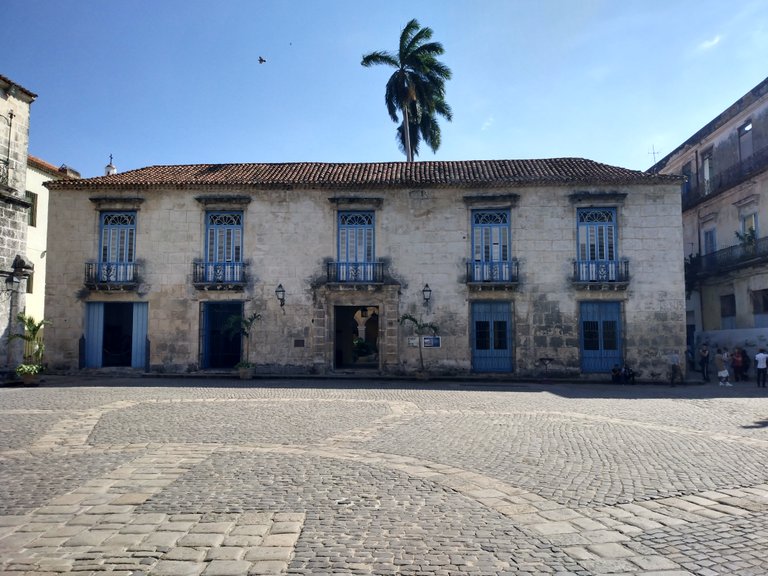
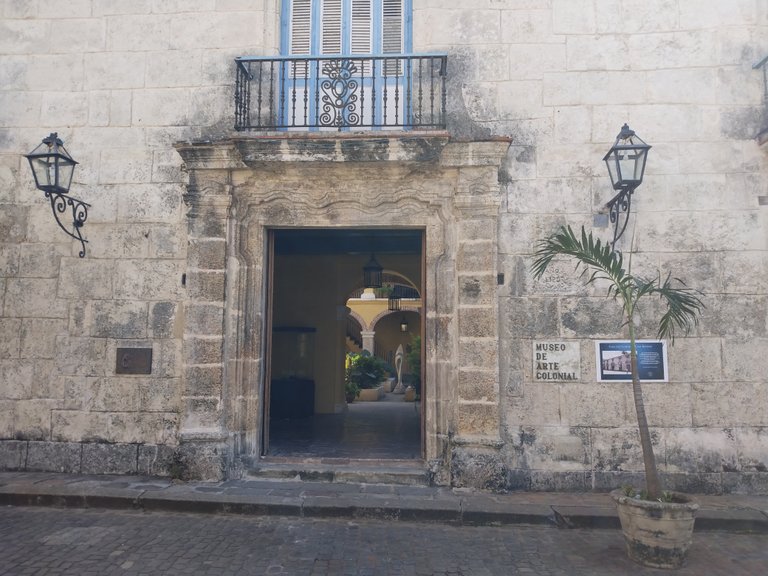
As was typical in the colony, the traditional inner courtyard was not to be missed. It is decorated with a small garden and two tall coconut palms. And a carved stone sculpture is erected in the centre.

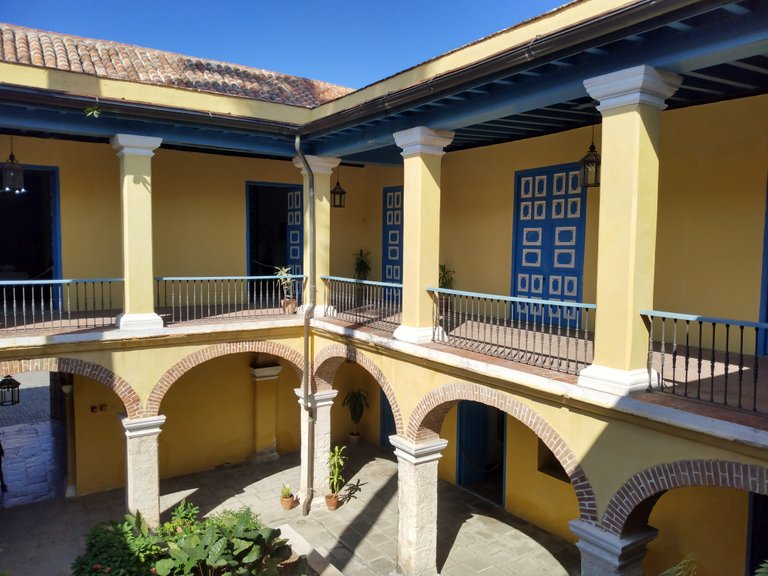
On the first floor there are rooms exhibiting the typical furnishings of the time. Such as cast iron structures known as ‘’guarda vecinos‘’ which were used to separate one balcony from another, as well as lantern holders. Very typical elements of the architecture of colonial Havana. Also exhibited is the first grille used in the grille to protect the window of a house.
Guarda vecinos
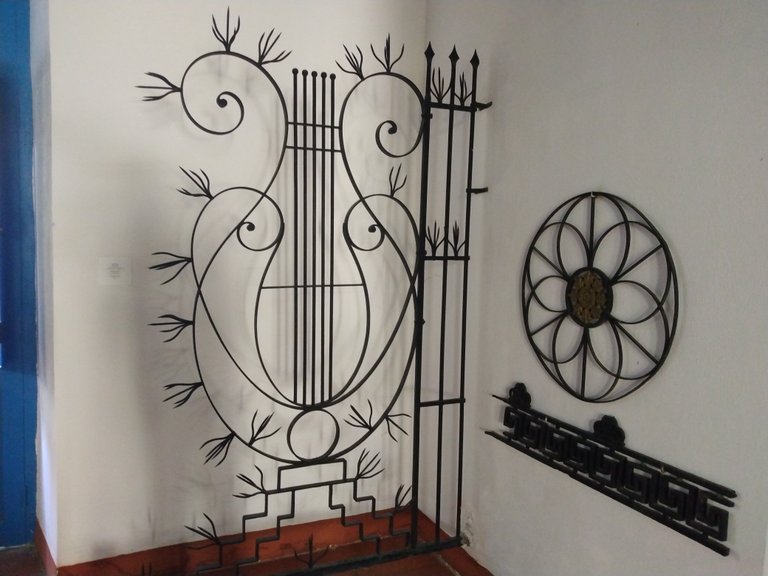
Lantern holders in the first plane.
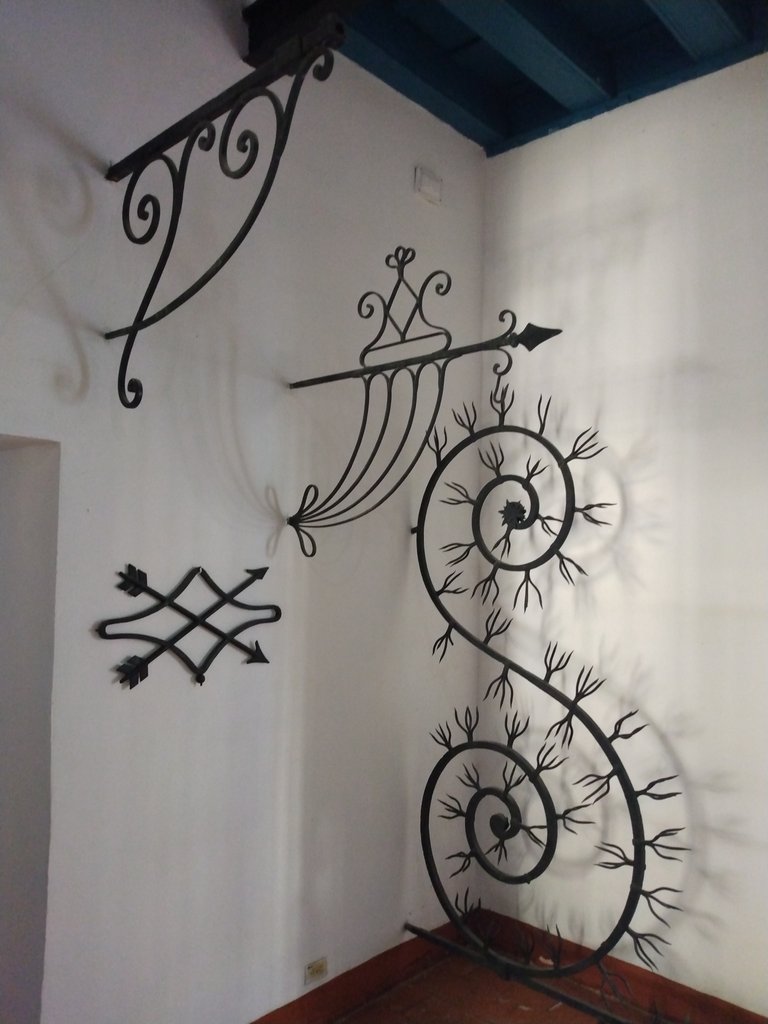
The first grill used in the city.
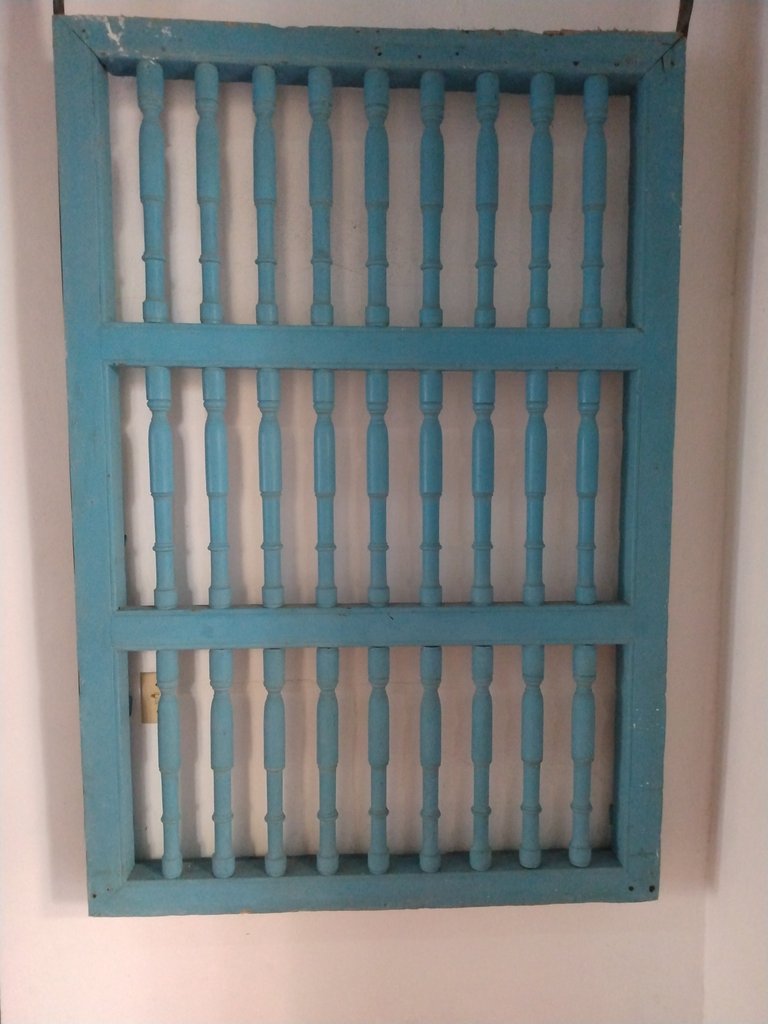
In the second room we can see a wide variety of locks, keys made of iron and bronze from the 19th century, as well as the wooden gates that were used.
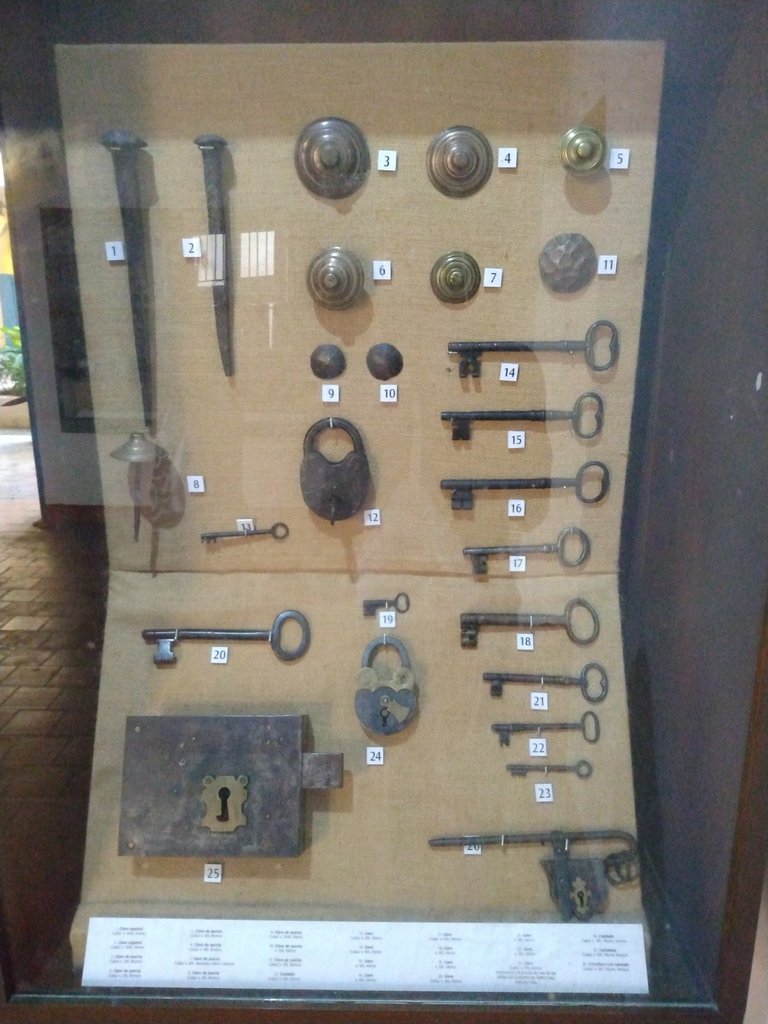
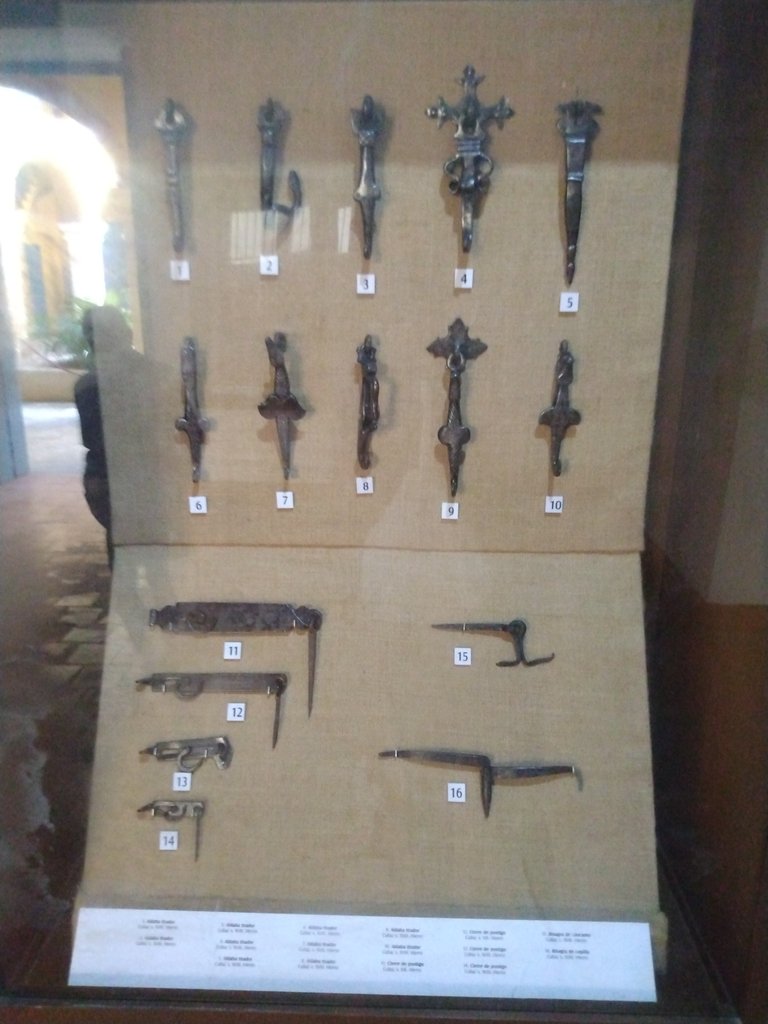
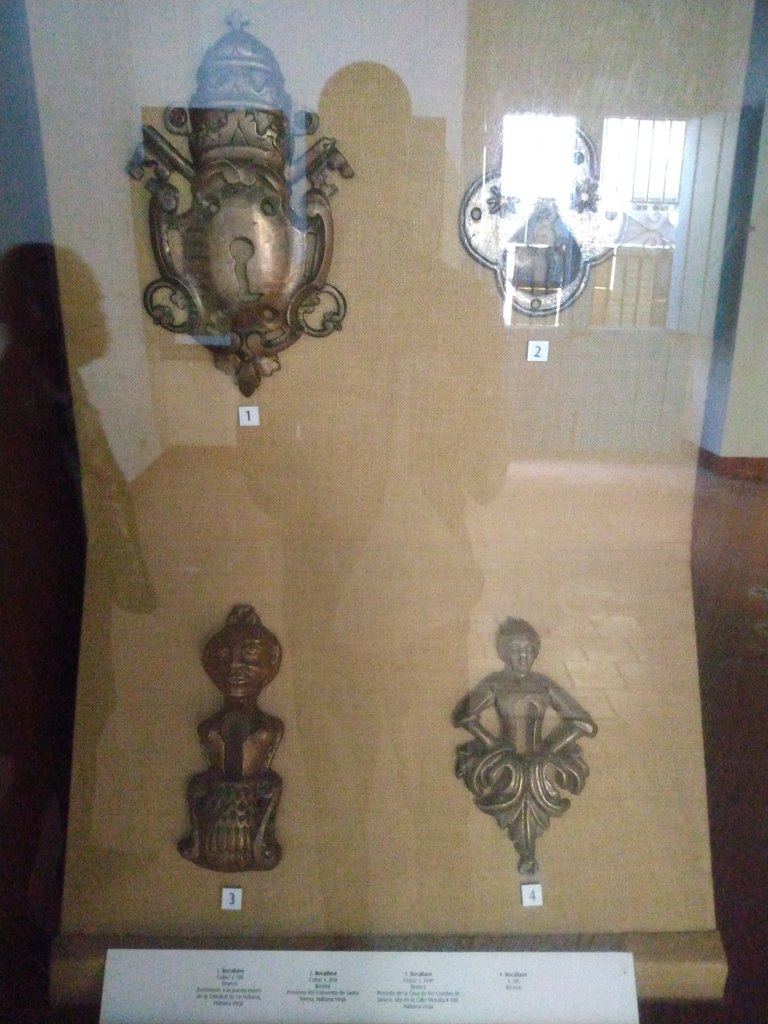
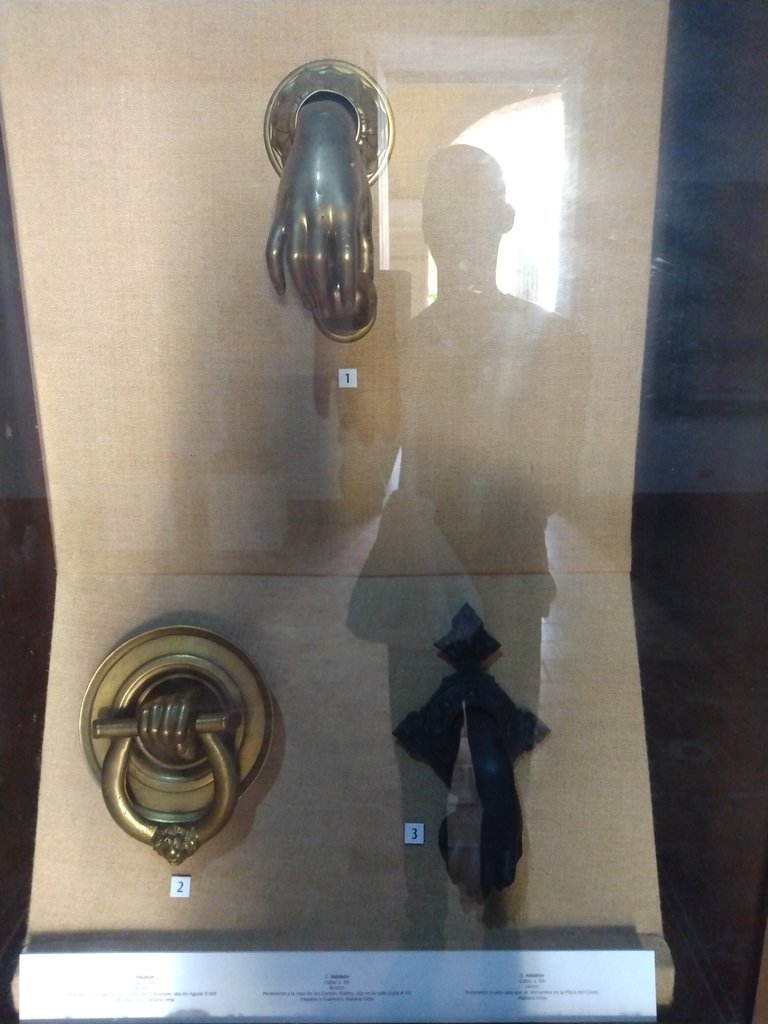
Old gates.
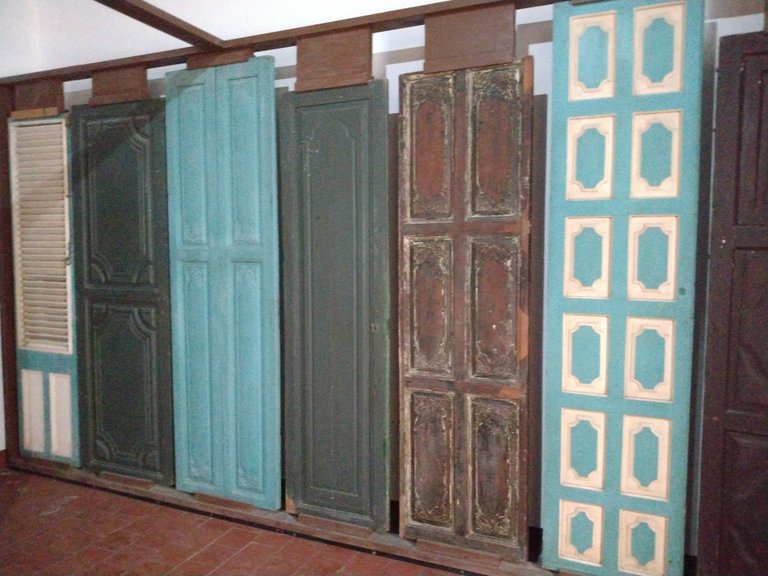
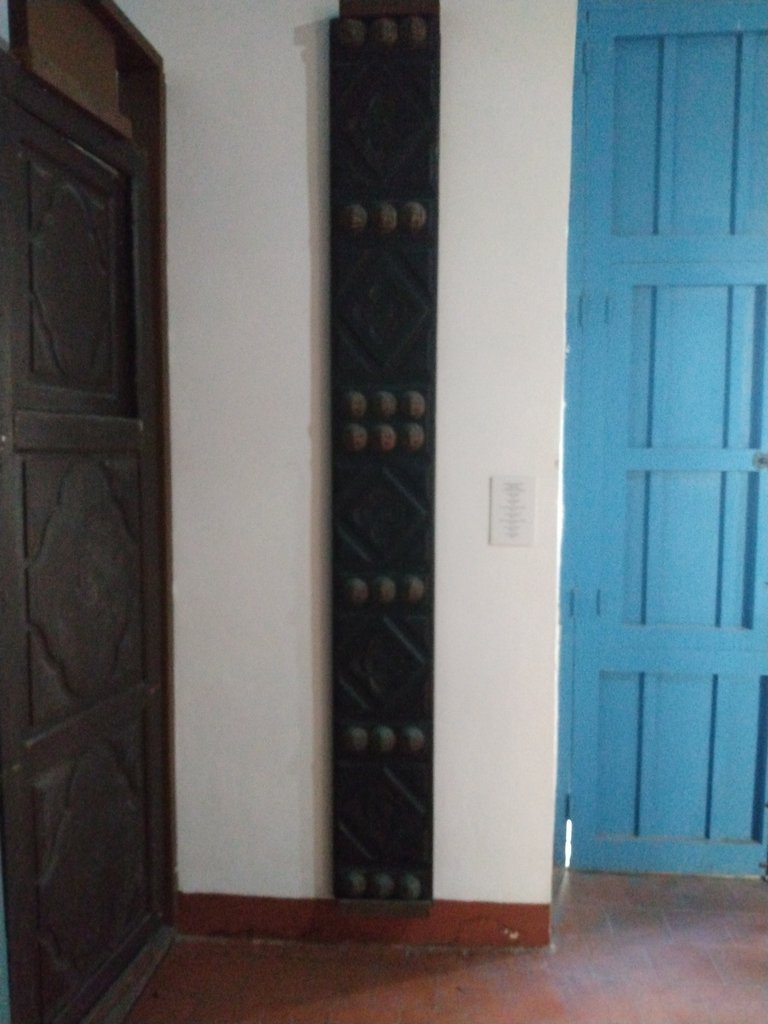
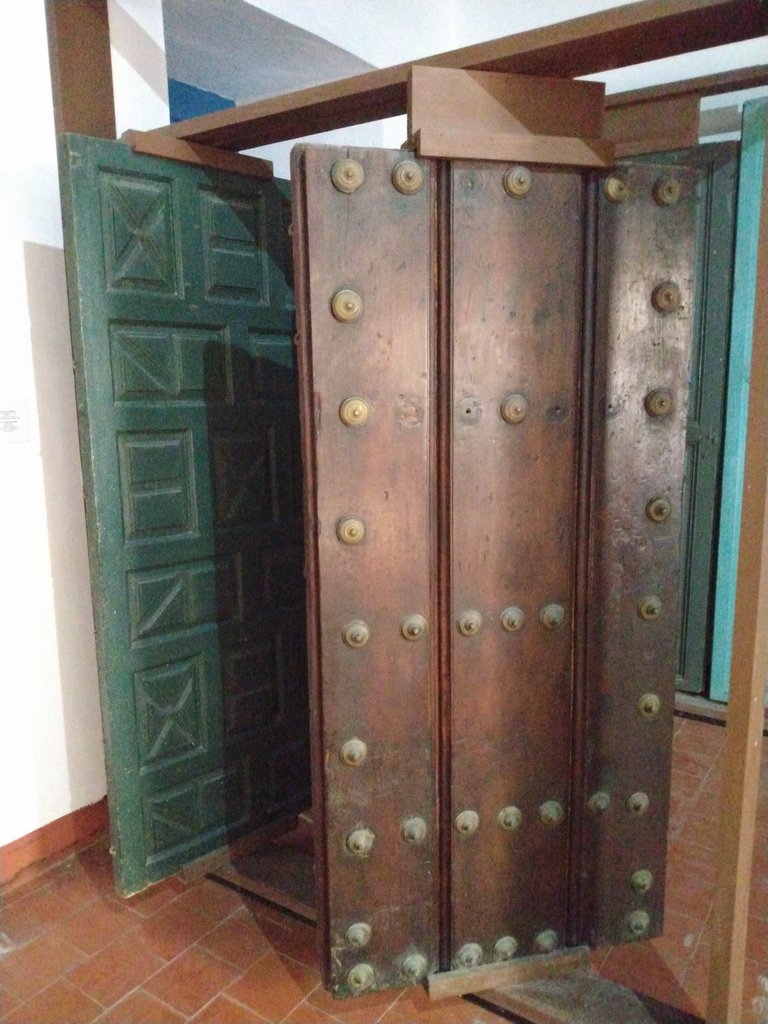
On the first floor we find one of the main rooms of the museum, the room of the Count of Casas de Bayona. Showing interesting objects from the bedroom. The bed, chests of drawers and tables are carved in precious mahogany wood.
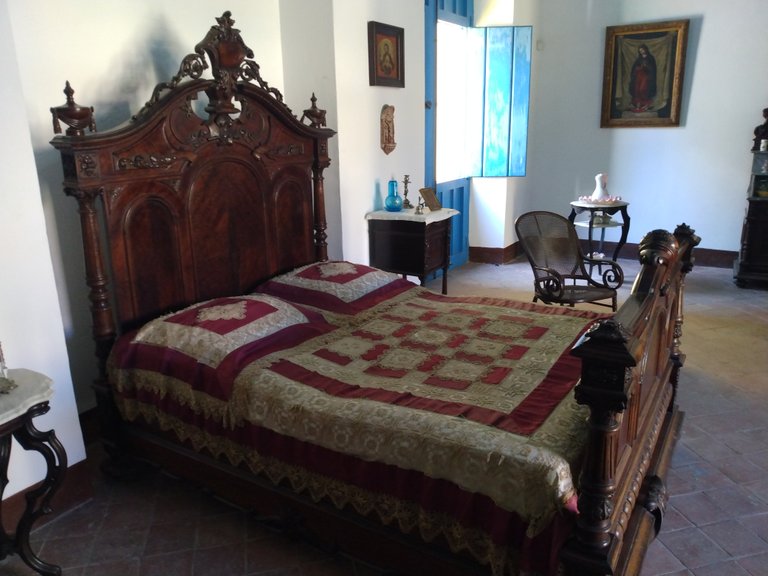
I was very struck by the small pictures hanging on the wall depicting members of the wealthy Bayonne family, because of the fact that real hair of the deceased present in the photos was used.
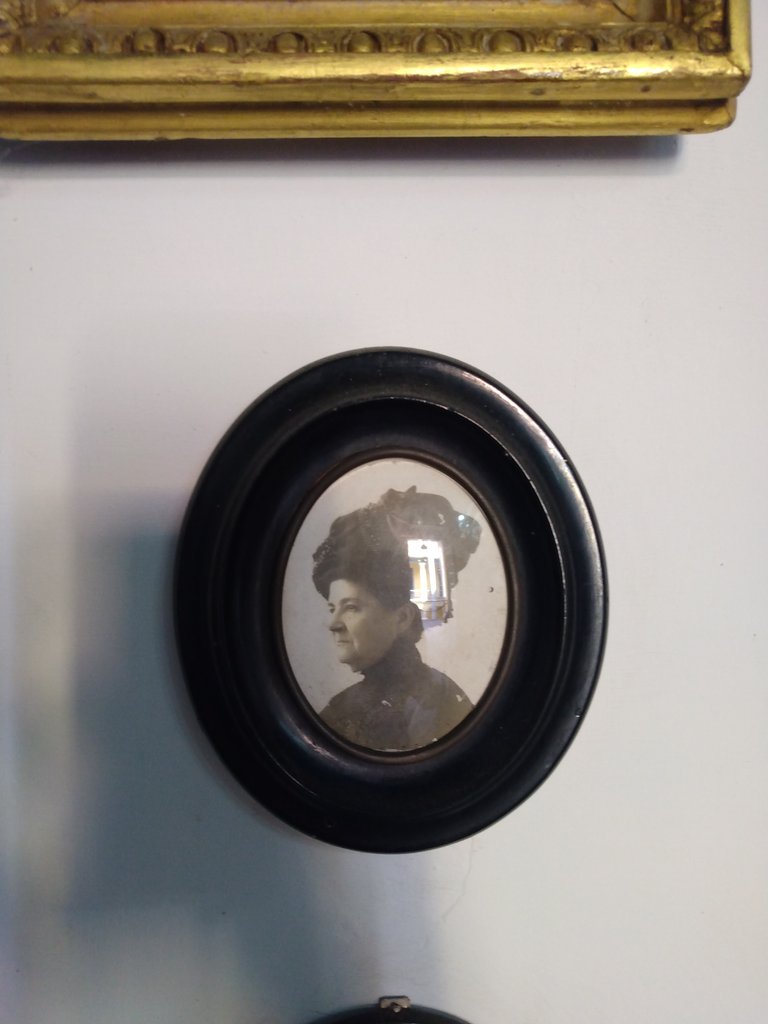
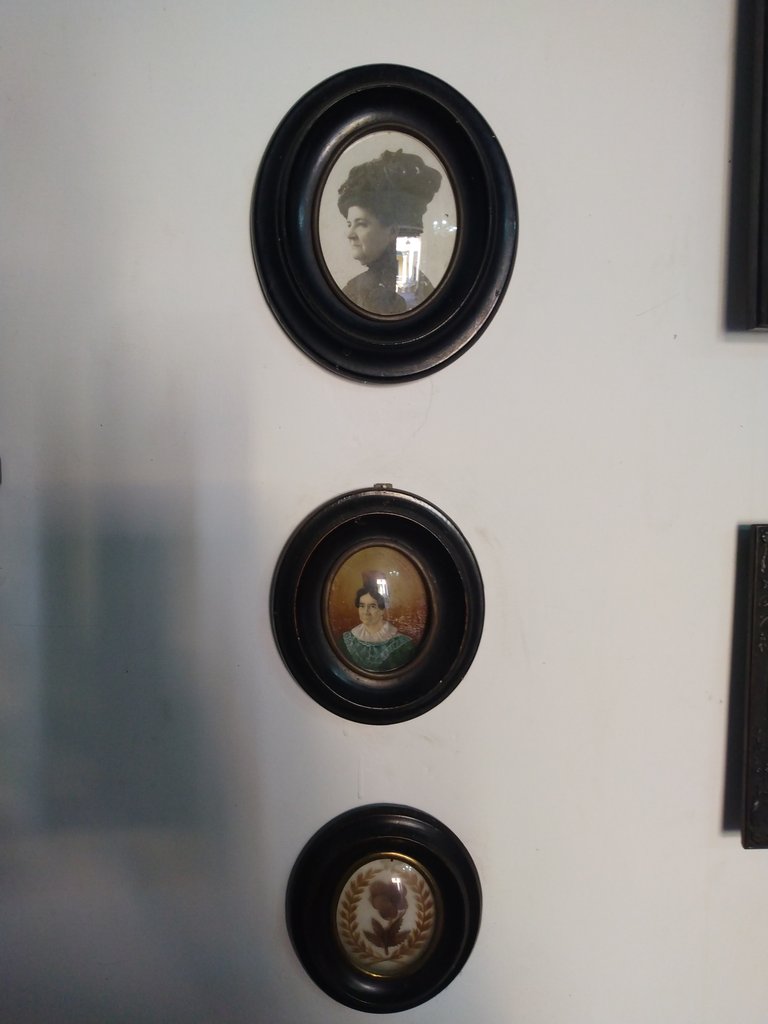
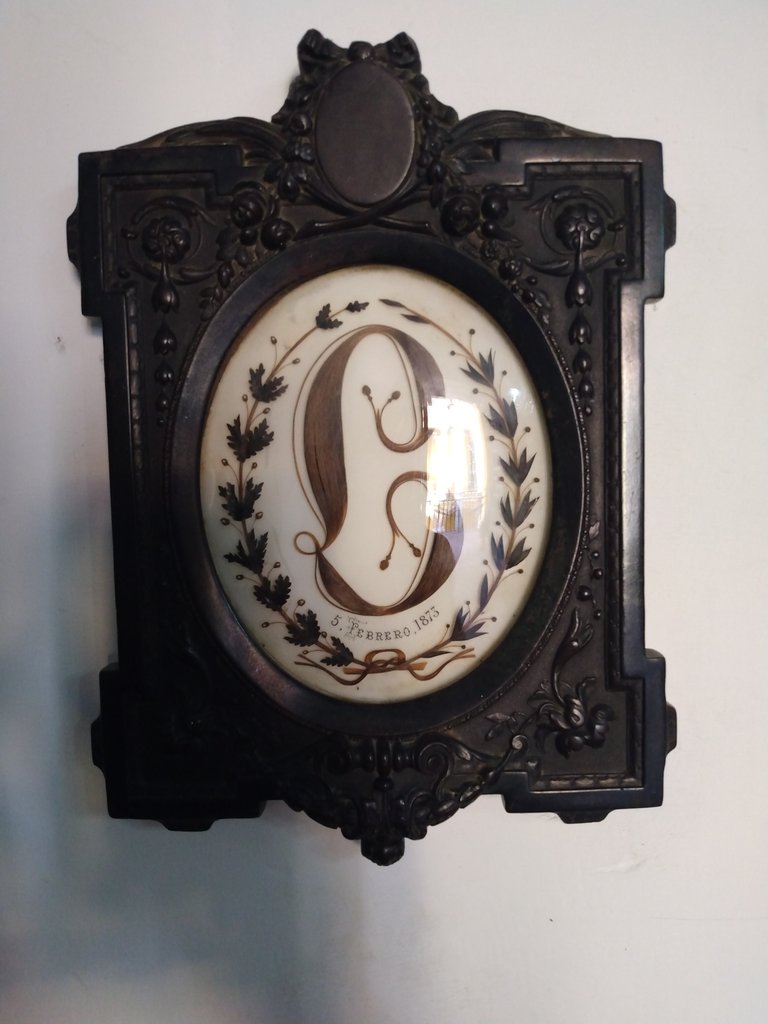
At one end of the room there is a washbasin made of veined marble and precious wood.
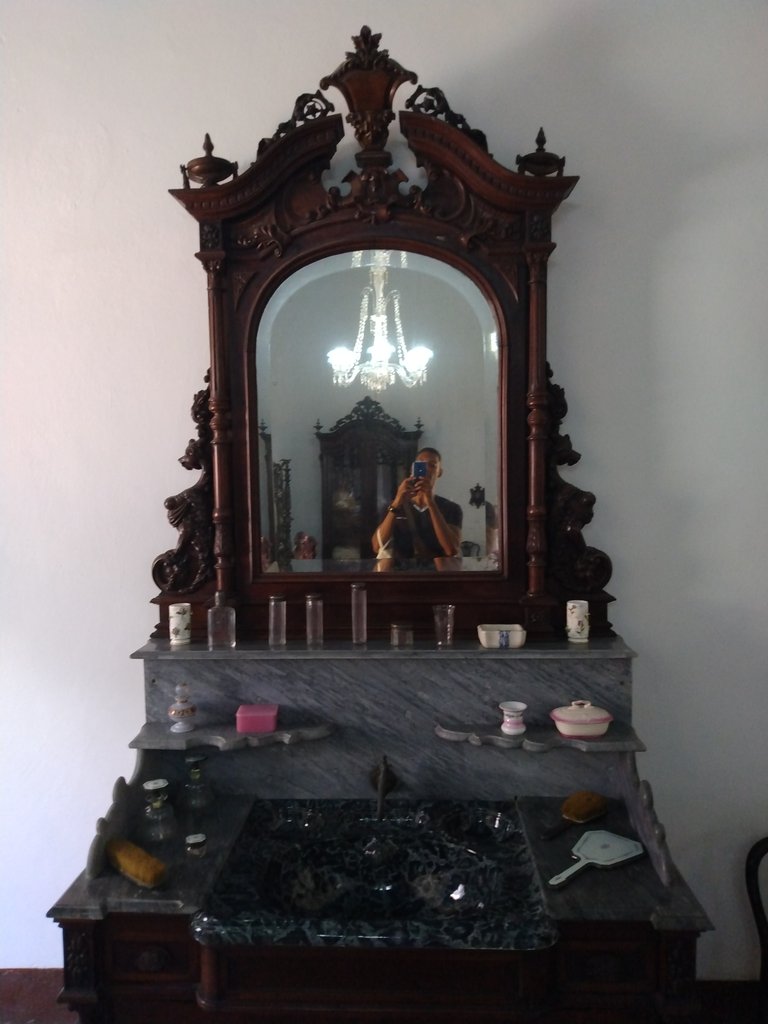
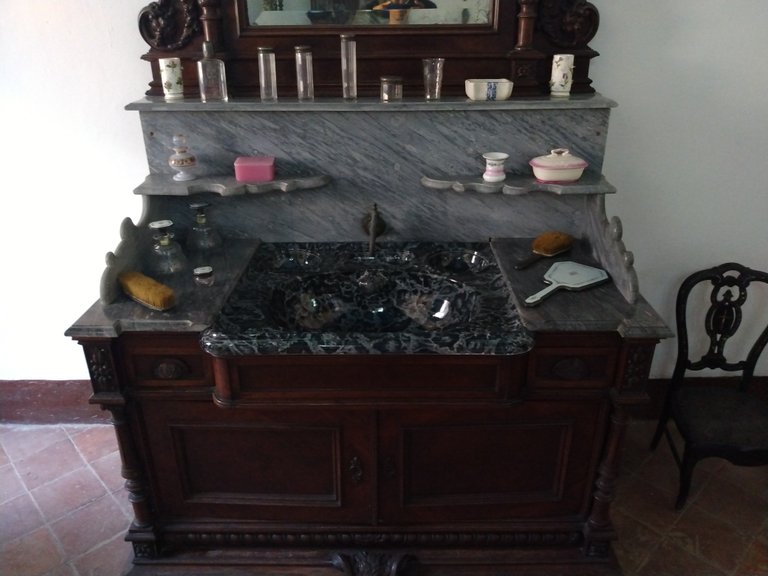
Chest of drawers with beautiful glass bureaus belonging to the American collection Mery Gregory characterised by the details of curls in the glass and drawings of children.
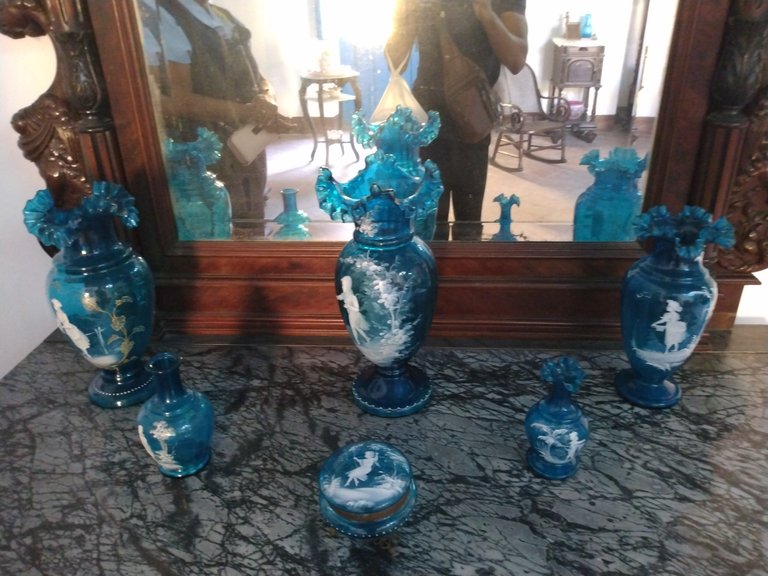
This beautiful apple-green jug, although it looks like plastic, is made of opaline crystal. It was used for washing hands and face.
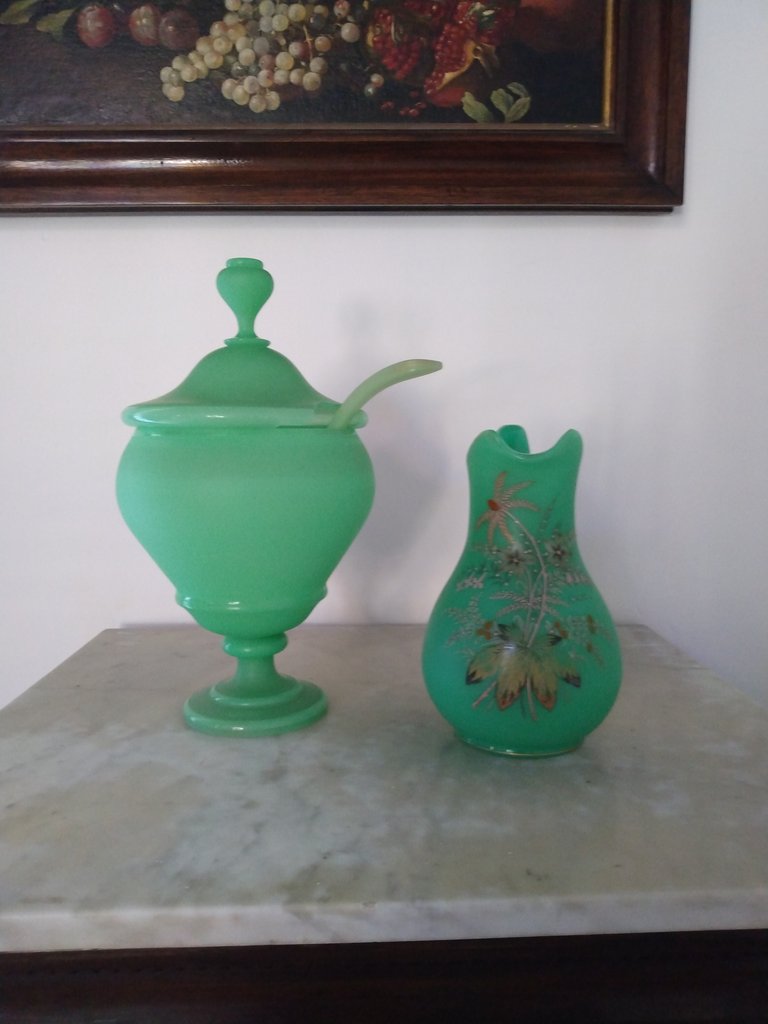
Adjoining the Count's room is the visitors' room, where family and friends used to meet. Here we find objects such as the clarichord, a set of furniture and the pendulum clock.
Clarichord
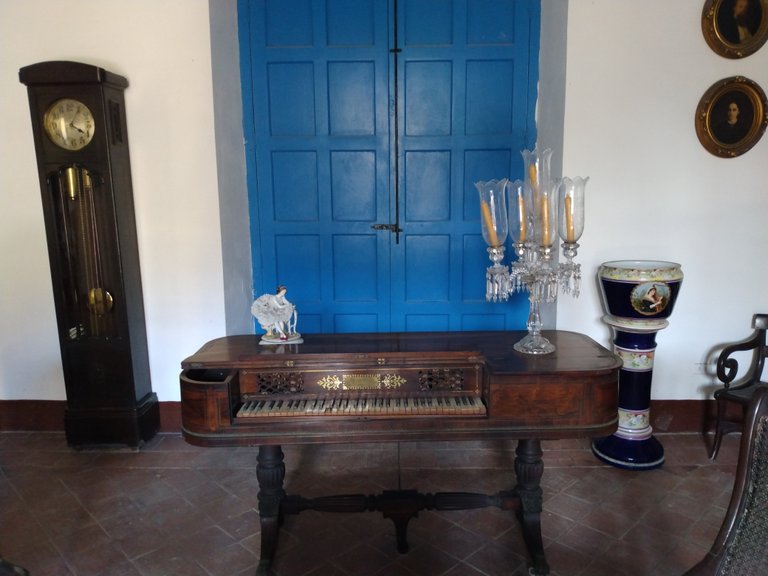
Pendulum clock
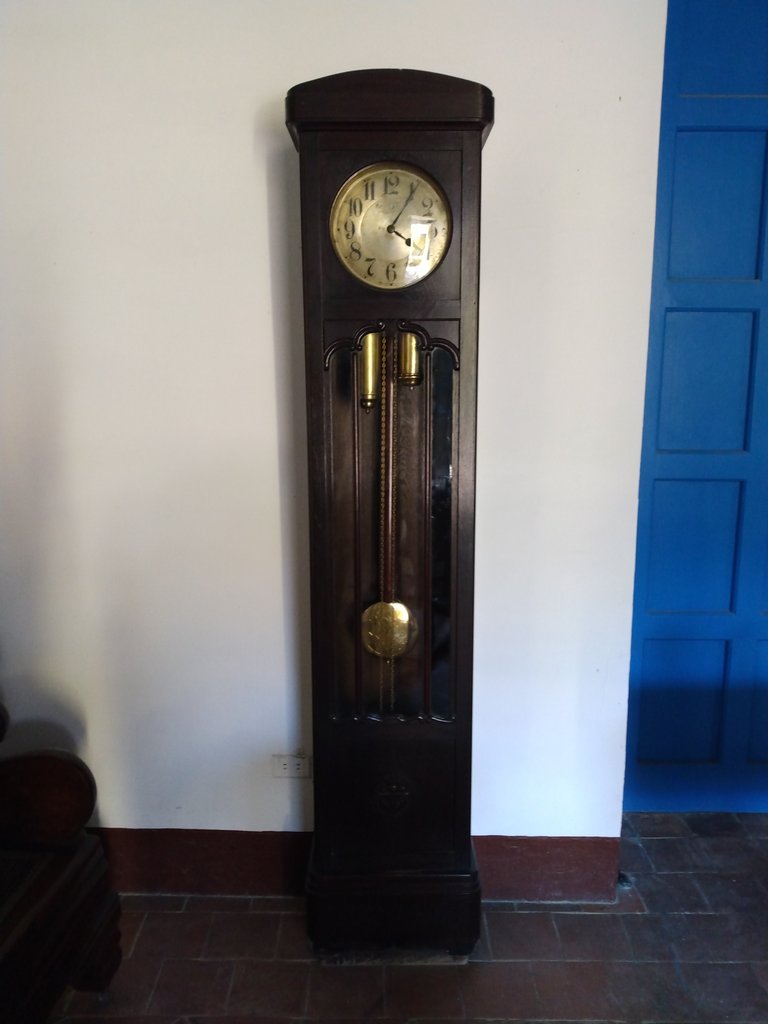
Table centrepiece
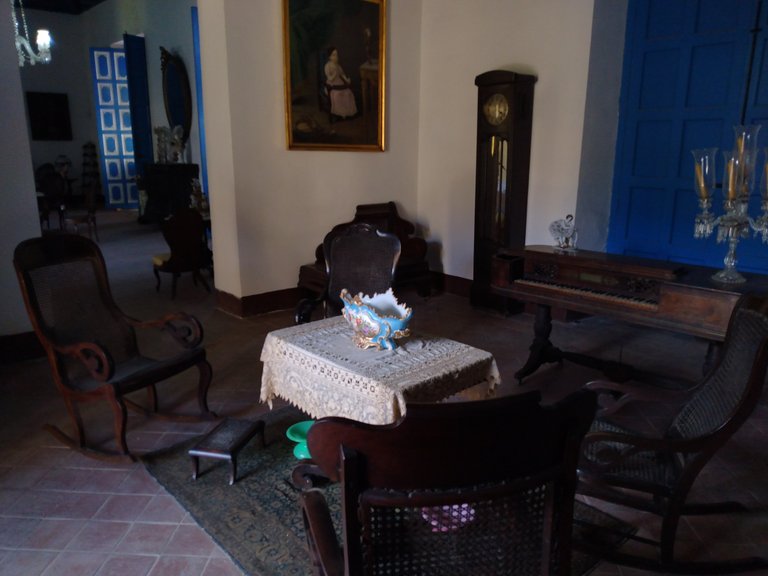
Another detail I didn't know about that time is that in this room there were some opaline glass containers on the floor, partially filled with rose petal water, which were used as a spittoon for people who decided to smoke tobacco.
Spittoons
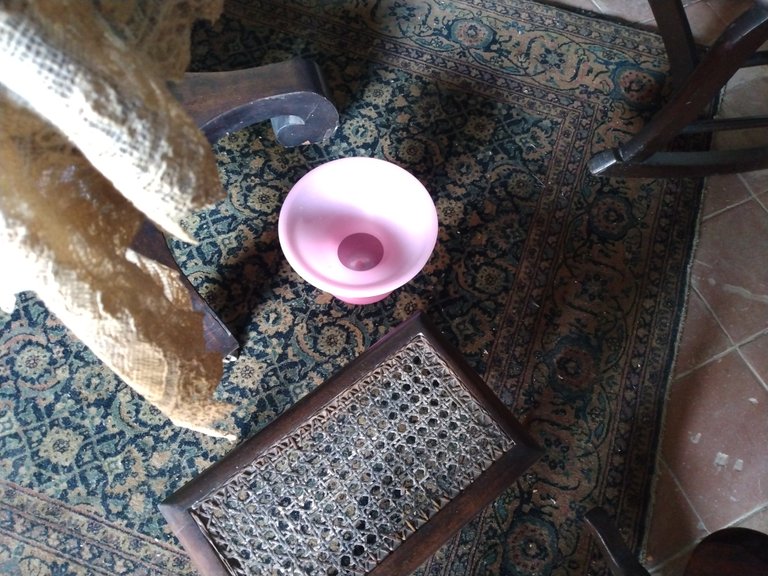
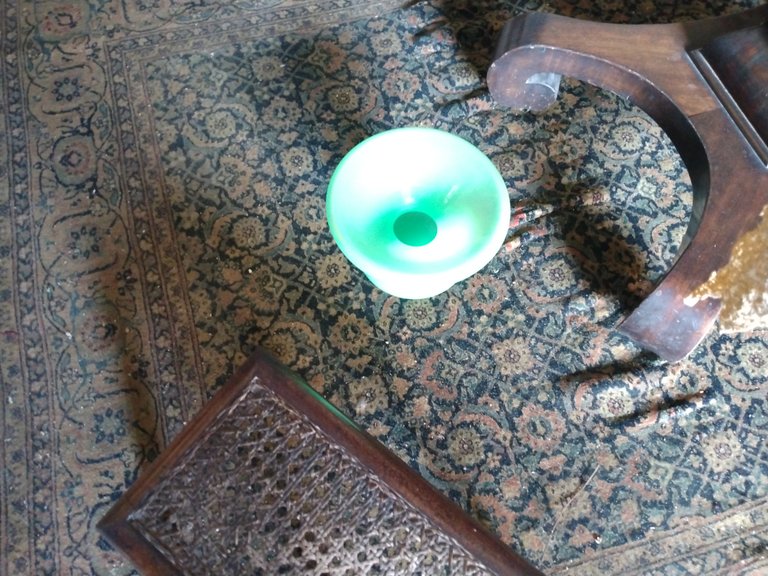
Here we have the dining room of the Mansion, among the most striking pieces is the so-called ‘’Object of Patience‘’ which refers to the time the nuns used to spend in making these beauties, approximately 3-6 months. Incredibly from a distance they look like natural flowers, but when you get closer and look closely you realise that materials from the sea such as shells, snails, etc. were used.
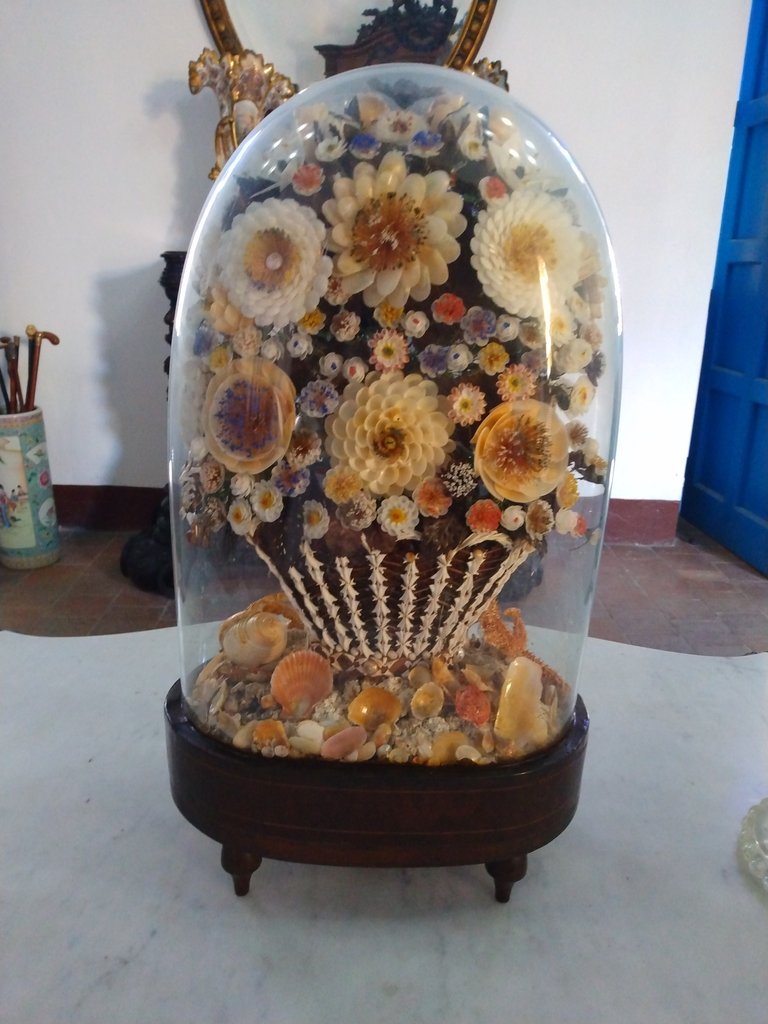
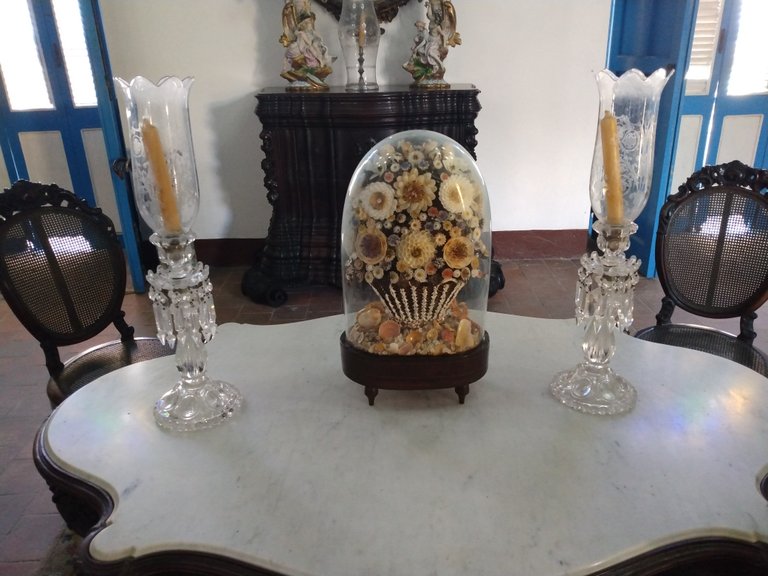
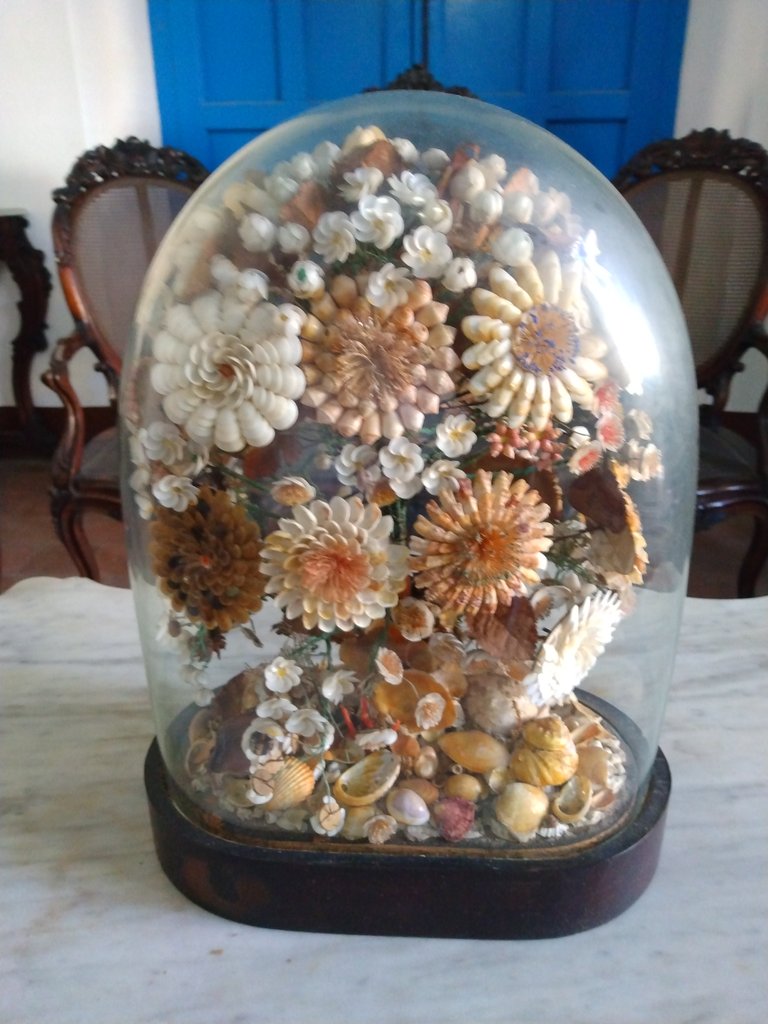
Dining table set with fine French porcelain.
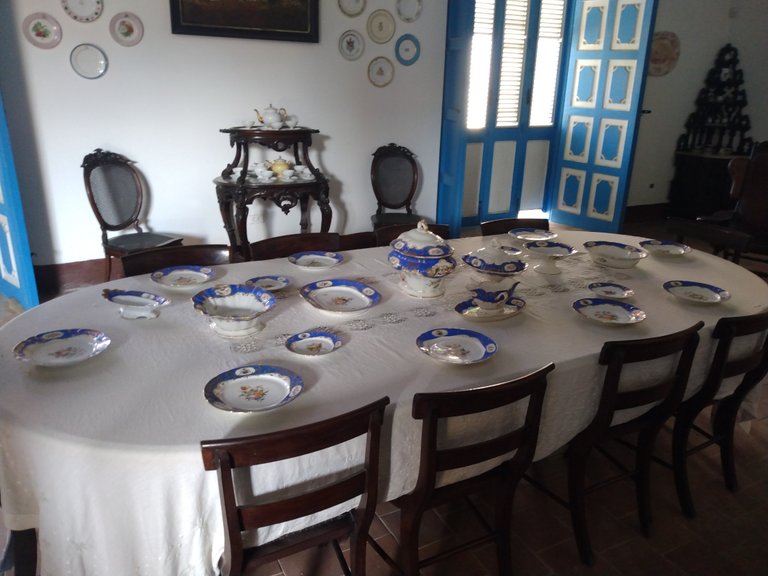
Beautiful stained glass window. Another characteristic element of the colonial period.
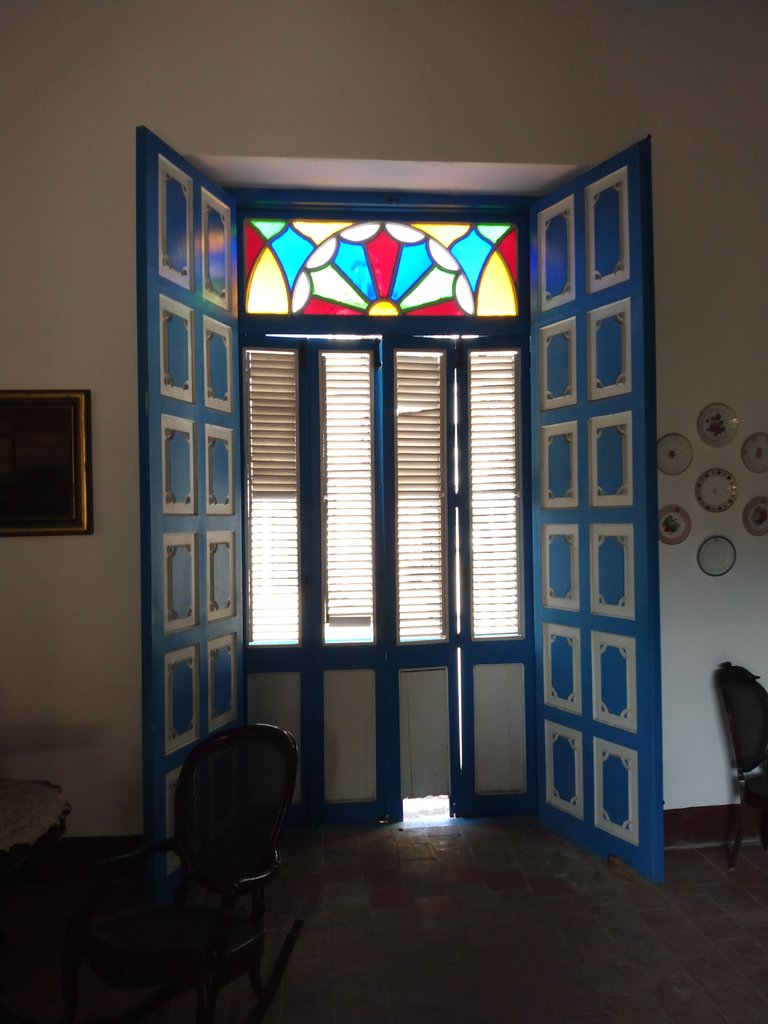
Other elements of the dining room.

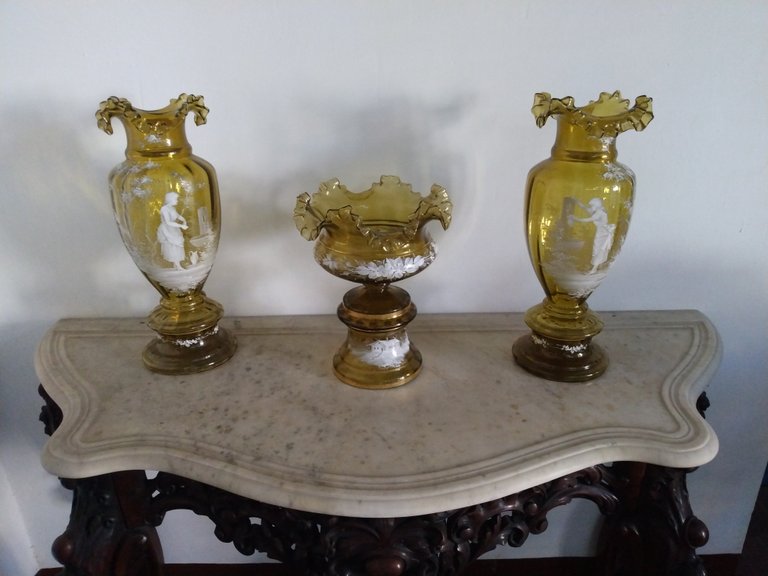
And we end our tour with the room dedicated to furniture.
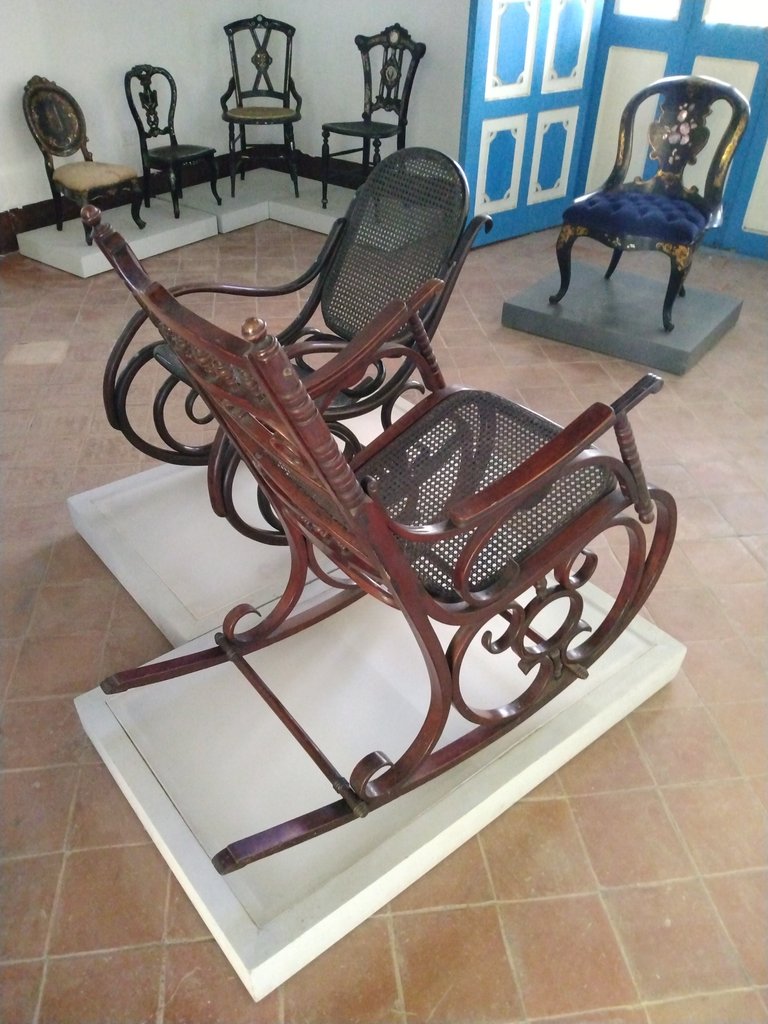
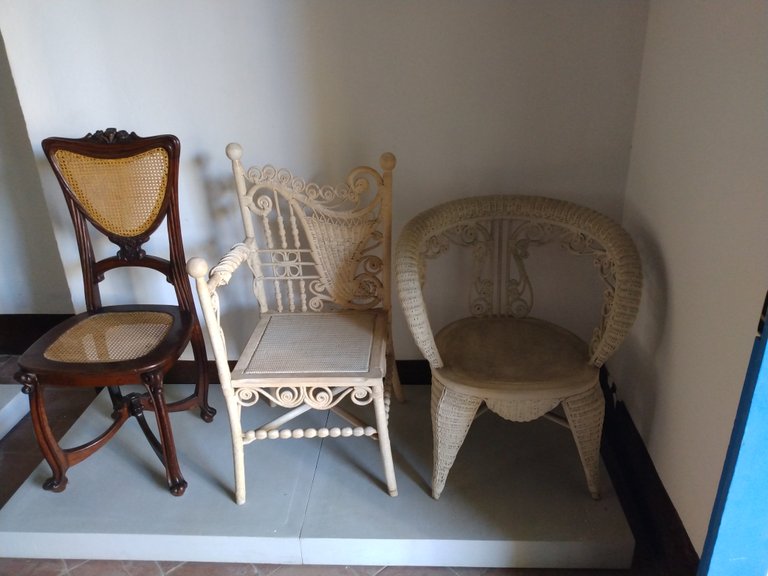
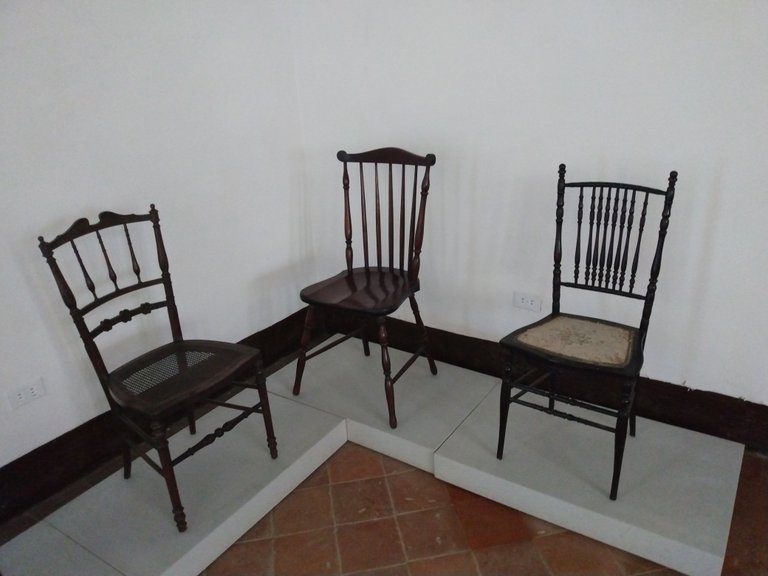
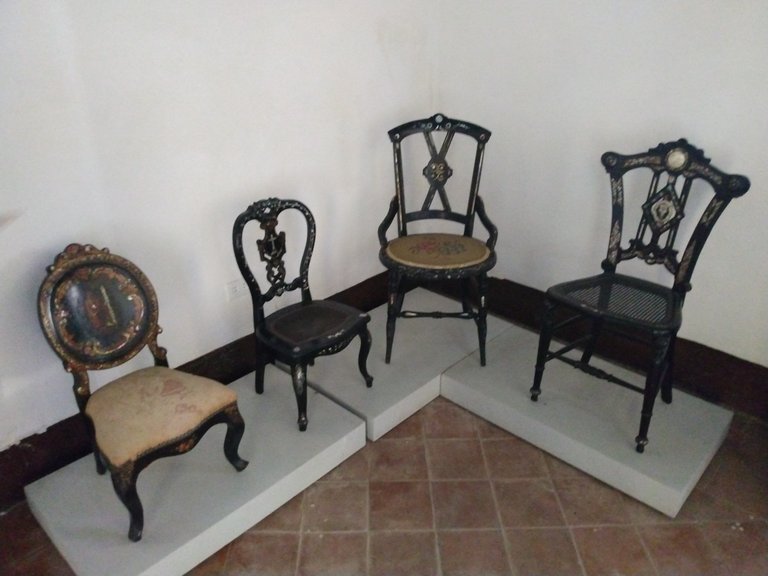
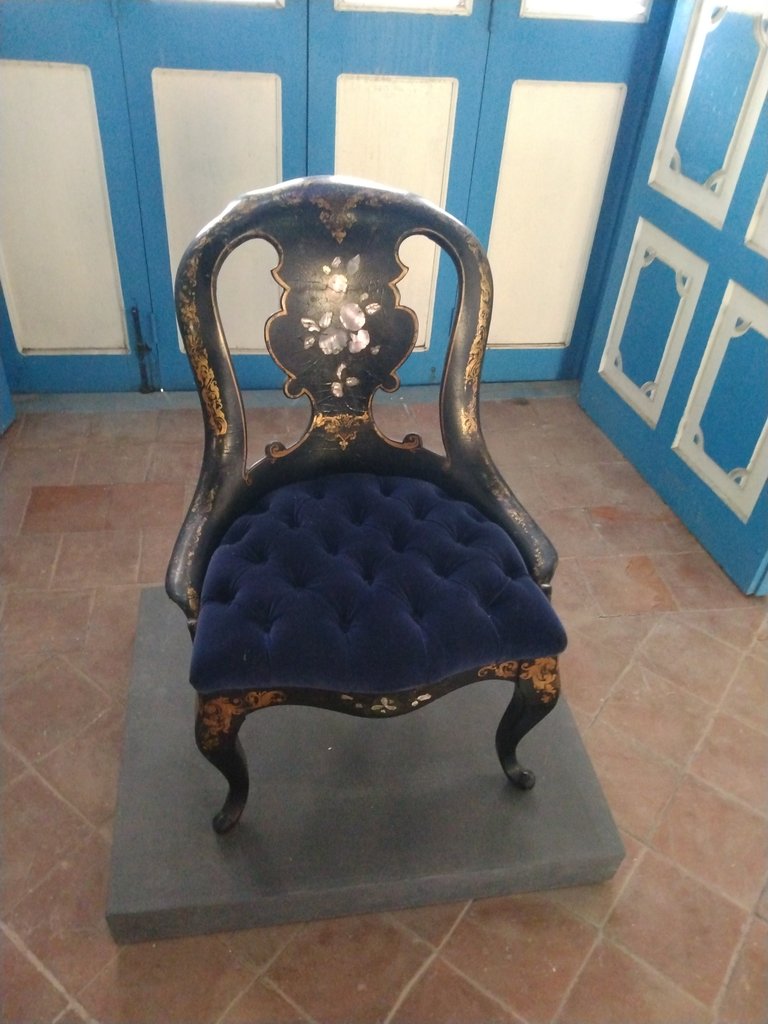
The traditional stool, made from wood and animal skins. Widely used in the Cuban countryside.
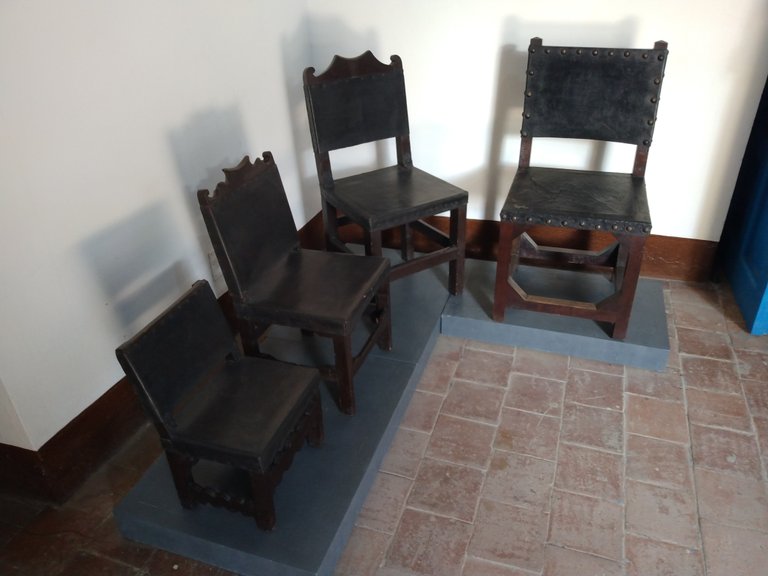
Well, so much for our tour of the colonial era in Cuba. Thank you for your time and see you on the next walking tour of Havana.
All photos are mine, taken with my Moto g play (2021) mobile phone.
Translated at DeepL.
Versión en español
Hola comunidad de viajeros. Recorriendo la plaza de la catedral de La Habana, tuve la oportunidad de visitar el Museo de Arte Colonial, donde podemos conocer de la vida colonial habanera puertas adentro. Acá se exhiben objetos que pertenecieron a la familia de Bayona y otras destacadas en la época. Este inmueble se construyó en 1720 por órden del Teniente Coronel Don Luis Chacón, quien fuera Capitán General y Gobernador de Cuba, quien a partir de 1726 comenzó a vivir en esta mansión. Tiempo más tarde fue la residencia de los Condes de Bayona, familia noble que habitó el edificio hasta mediados del siglo XIX. En 1969, se convierte en museo. El inmueble consta de dos plantas y su simple fachada con pocos decorados recuerda a las antiguas casonas castellanas de esa época, sin embargo, cuenta con elementos característicos de la arquitectura colonial que hacen único esta edificación.
El museo cuenta con una variada colección de objetos cotidianos, cerámicas, vajillas, mobiliario, artesanías, etc. Provenientes de algunas de las antiguas familias más destacadas en la colonia.
Como era típico en la colonia, no podía faltar el tradicional patio interior. Está decorado con un pequeño jardín y dos altos cocoteros. Y en el centro se erige una escultura de piedra tallada.
En la primera planta hay habitaciones que exhiben el mobiliario típico de la época. Como las estructuras de hierro fundido conocidas como ''guarda vecinos'' que se utilizaban para separar un balcón de otro, así como los soportes de los faroles. Elementos muy típicos de la arquitectura de La Habana colonial. También se exhibe la primera reja utilizada para proteger la ventana de una casa.
Guarda vecinos
Soporte de faroles en primer plano.
La primera reja usada en la ciudad
En la segunda sala podemos ver una gran variedad de cerraduras, llaves de hierro y bronce del siglo XIX, así como los portones de madera que se utilizaban.
Portones antiguos.
En la primera planta encontramos una de las salas principales del museo, la habitación del Conde de Casas de Bayona. Muestra interesantes objetos del dormitorio. La cama, las cómodas y las mesas están talladas en madera preciosa de caoba.
Me llamó mucho la atención los pequeños cuadros colgados en la pared que representan a miembros de la acaudalada familia Bayona, por el hecho de que se utilizó pelo real de los difuntos presentes en las fotos.
En un extremo de la habitación hay un lavabo de mármol veteado y madera preciosa.
Cómoda con bellos búcaros de cristal pertenecientes a la colección americana Mery Gregory caracterizada por los detalles de rizos en el cristal y dibujos de niños.
Esta hermosa jarra de color verde manzana, aunque parece de plástico, es de cristal opalino. Se utilizaba para lavarse las manos y la cara.
Junto a la habitación del conde se encuentra la sala de visitas, donde solían reunirse familiares y amigos. Aquí encontramos objetos como el claricordio, un juego de muebles y el reloj de péndulo.
Claricordio
Reloj de péndulo
Centro de mesa
Otro detalle que desconocía de aquella época es que en esta sala habían unos recipientes de vidrio opalino en el suelo, parcialmente llenos de agua de pétalos de rosa, que se utilizaban como escupidera para las personas que decidían fumar tabaco.
Escupideras
Aquí tenemos el comedor de la Mansión, entre las piezas más llamativas está el llamado ''Objeto de la Paciencia'' que hace referencia al tiempo que empleaban las monjas en realizar estas bellezas, aproximadamente de 3 a 6 meses. Increíblemente desde lejos parecen flores naturales, pero cuando te acercas te das cuenta de que se utilizaron materiales del mar como conchas, caracoles, etc.
Mesa de comedor con fina porcelana francesa.
Hermoso vitral. Otro elemento característico de la época colonial.
Otros elementos del comedor.
Y terminamos nuestro recorrido con la sala dedicada a los muebles.
Bueno, hasta aquí nuestro recorrido por la época colonial en Cuba. Gracias por su tiempo y nos vemos en el próximo recorrido andando por La Habana.
Todas las fotos son mías, tomadas con mi teléfono móvil Moto g play (2021).
Traducidas en DeepL.
You can check out this post and your own profile on the map. Be part of the Worldmappin Community and join our Discord Channel to get in touch with other travelers, ask questions or just be updated on our latest features.
!discovery shots
This post was shared and voted inside the discord by the curators team of Discovery-it in collaboration with Visual Shots community.
Discovery-it is also a Witness, vote for us here
Delegate to us for passive income. Check our 80% fee-back Program
Thanks for your curation and support
Travel Digest #2467.
Become part of our travel community:
- Join our Discord
Hiya, @ybanezkim26 here, just swinging by to let you know that this post made it into our Honorable Mentions in Your post has been manually curated by the @worldmappin team. If you like what we're doing, please drop by to check out all the rest of today's great posts and consider supporting other authors like yourself and us so we can keep the project going!It's honour for me. Thanks for your curation and support.
Oh it is well deserved! Keep up the good work! 🥰
Hello, @ybanezkim26. It's a honour for me to be between the participants in travel digest. Thanks for your curation and support.
Está muy bien merecido, gracias por compartir tus aventuras con nosotros y por sumar valor a la comunidad, sigue con el buen trabajo! 👌🏻🙌
The place still looks beautiful, which can be explained by the fact that it is so old. It is great to see such a beautiful weather in such an old place. Although the place is very old and has retained its tradition. The paintings from outside to inside are amazing. What a beautiful structure, how much art you have done in these designs, which will actually be at the top of the tradition. Thank you very much for sharing with us.
Hello. I appreciate your comment. You are right is very interesting site for to visit in Havana. Best regards.
Congratulations @reneyasmany! You have completed the following achievement on the Hive blockchain And have been rewarded with New badge(s)
Your next target is to reach 900 upvotes.
You can view your badges on your board and compare yourself to others in the Ranking
If you no longer want to receive notifications, reply to this comment with the word
STOPCheck out our last posts:
Thanks
That's great @reneyasmany! We're excited to see your accomplishments on Hive! We keep cheering you on for your next goal!
BTW, our NEW proposal needs your support to continue bringing gamification and entertainment to Hive. Please consider supporting it and helping us out.
Thank you!